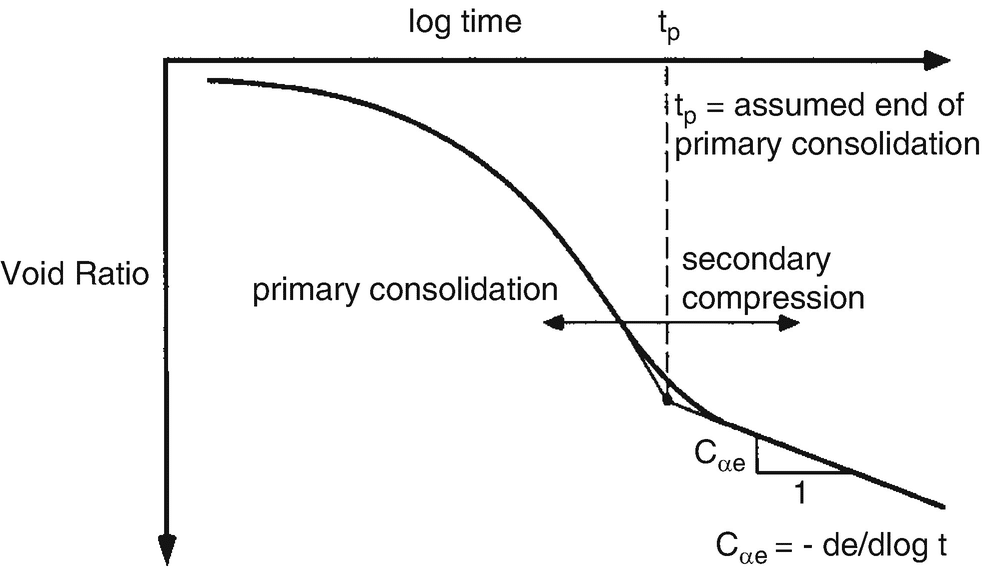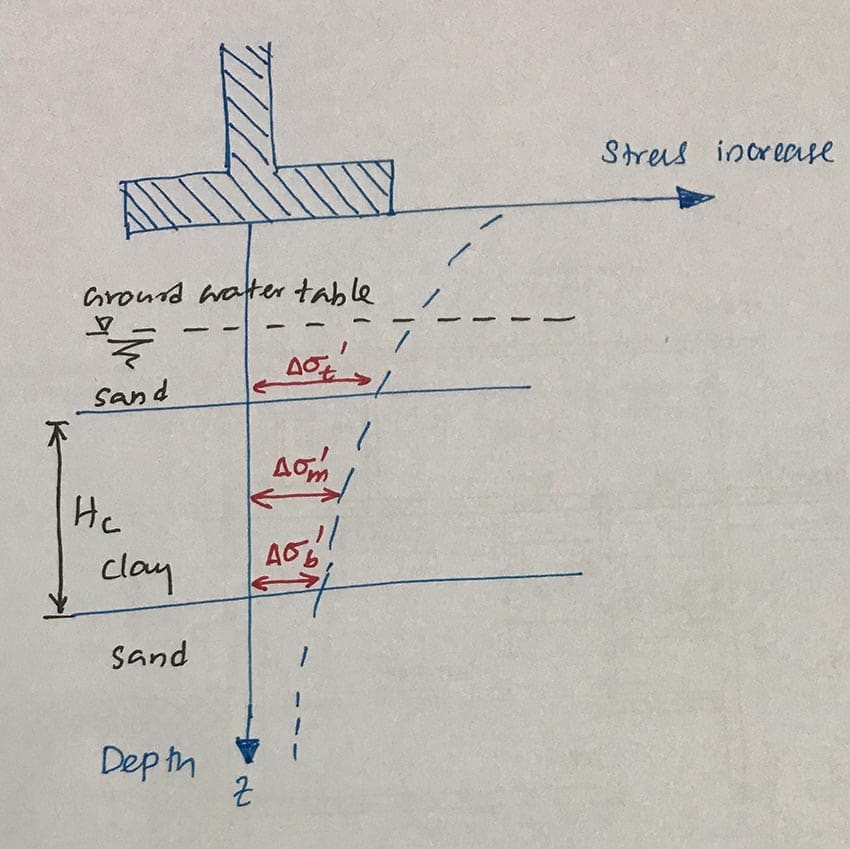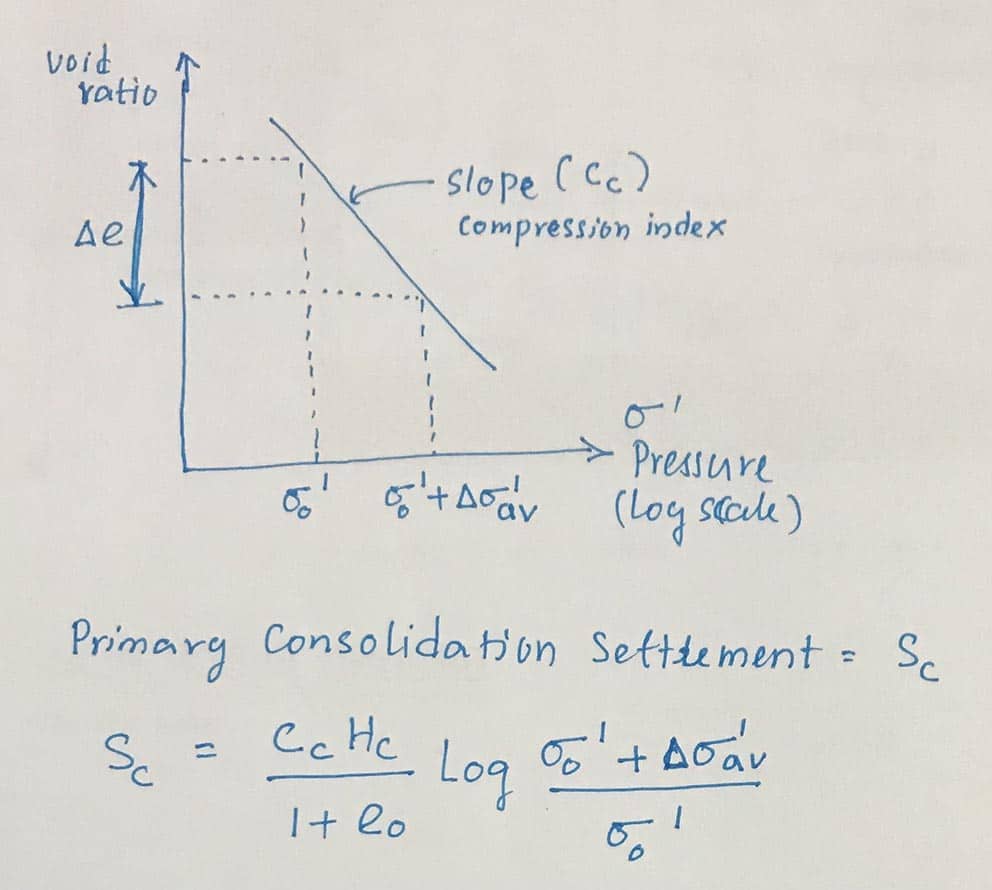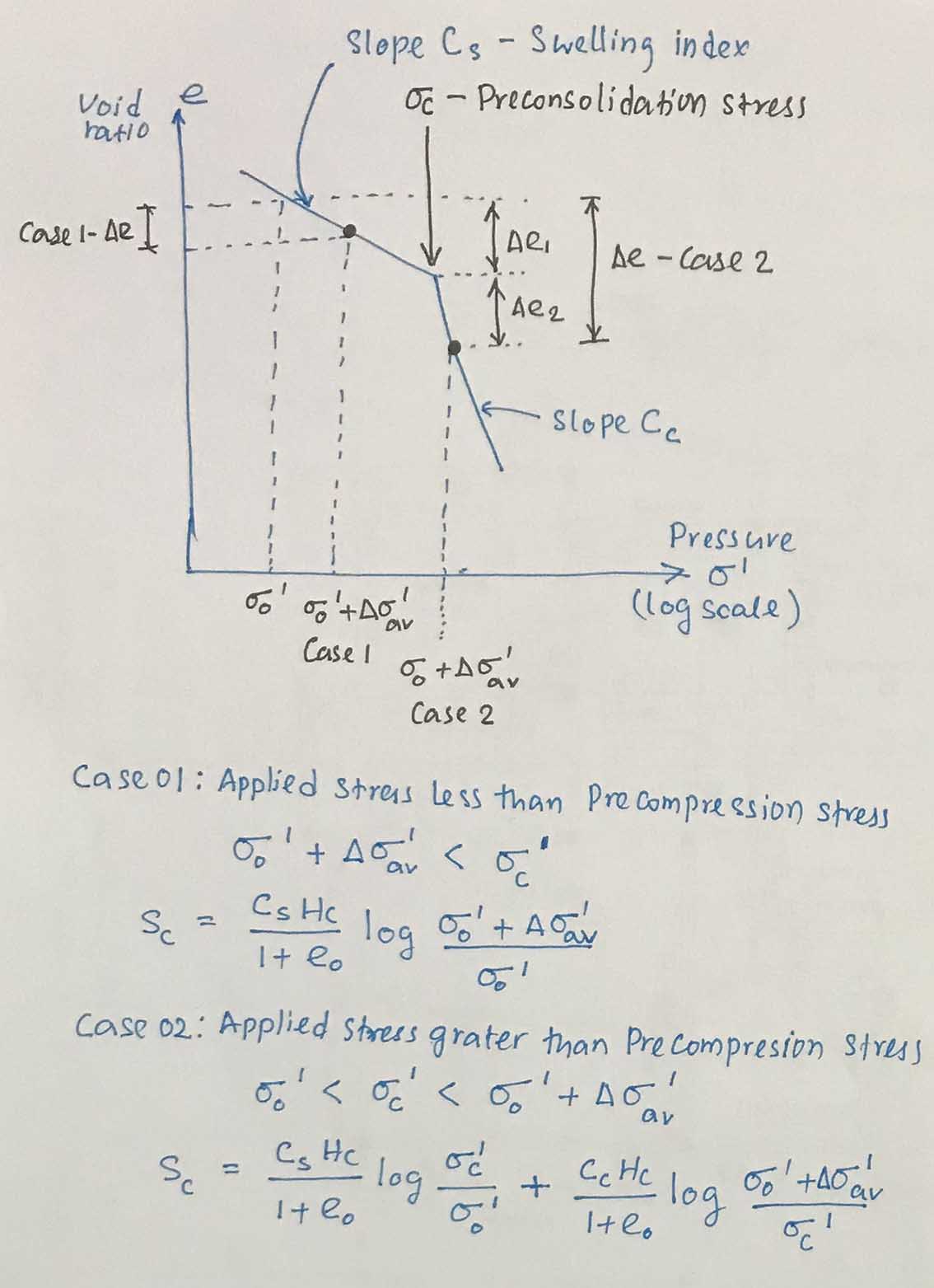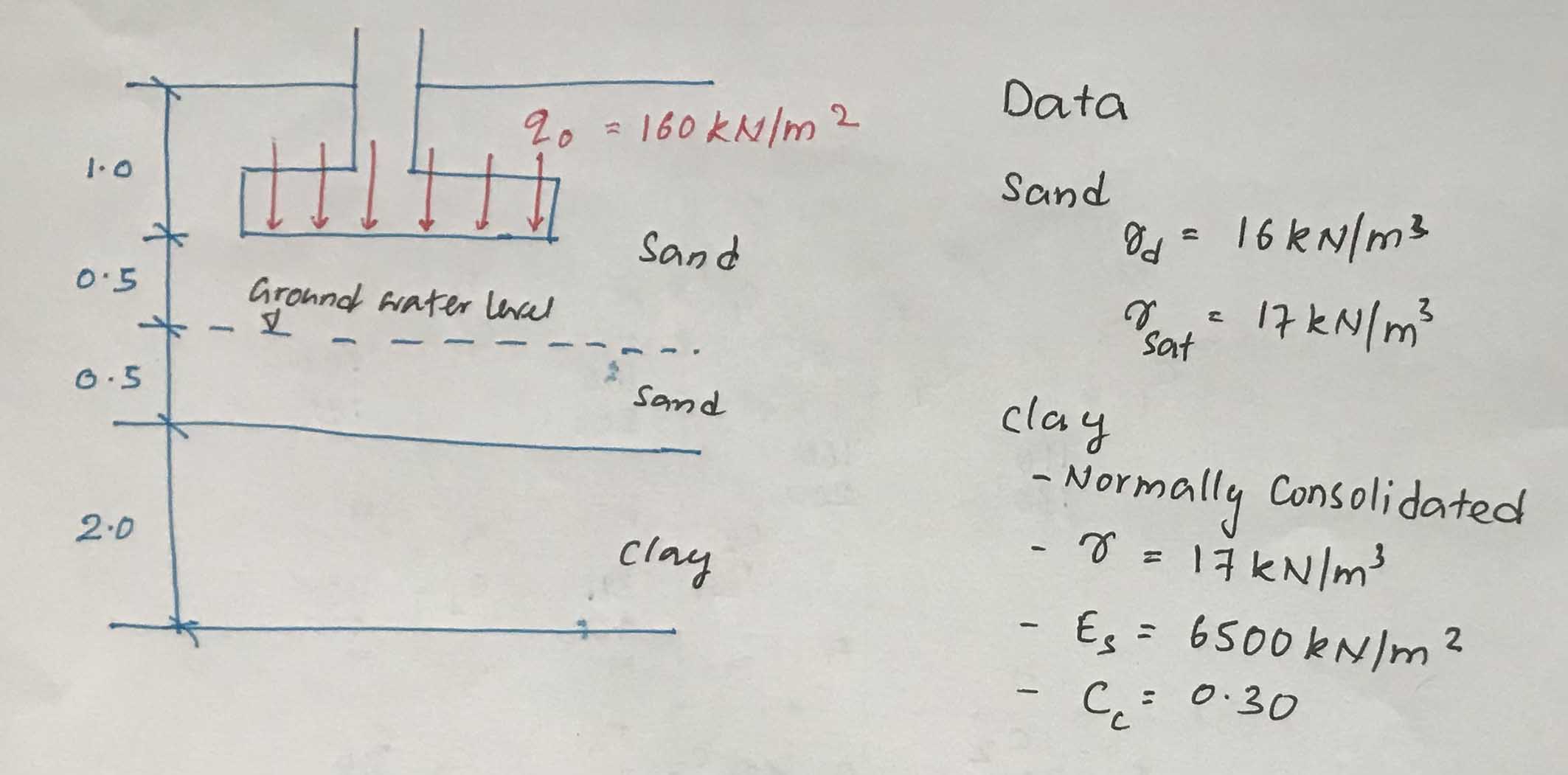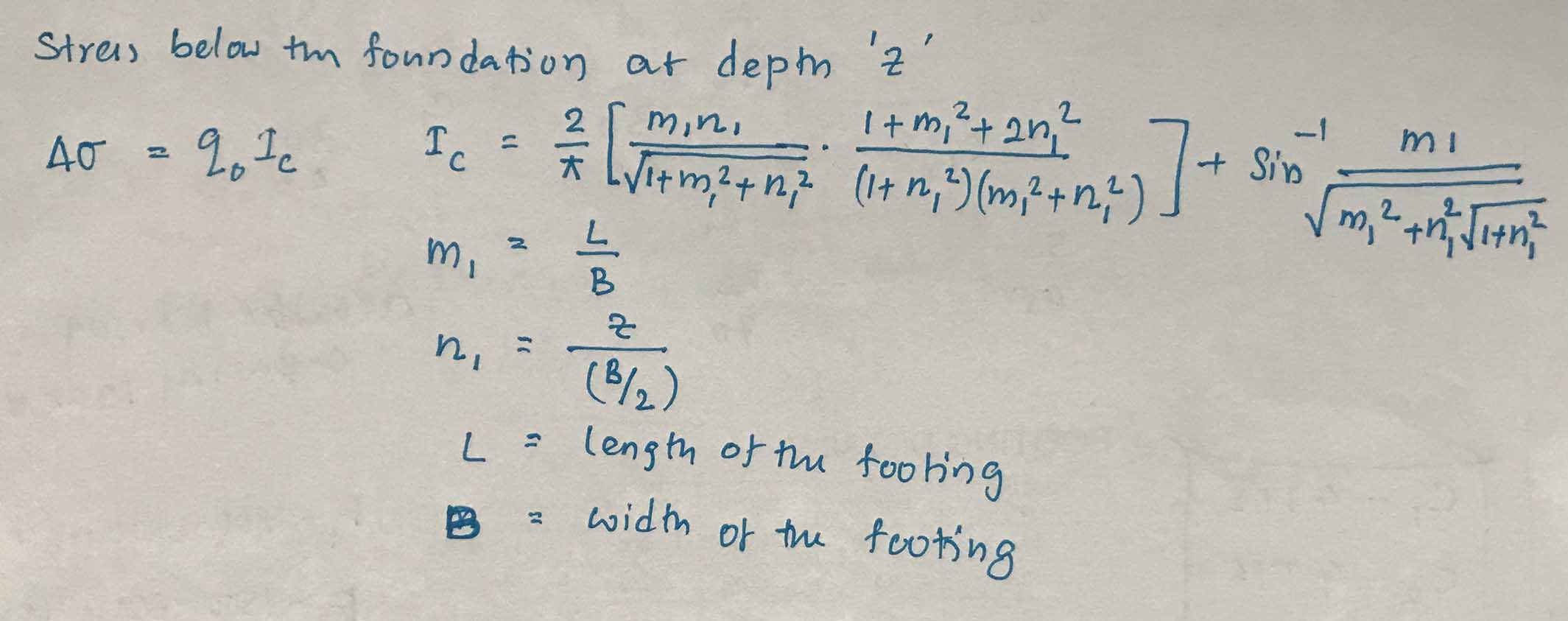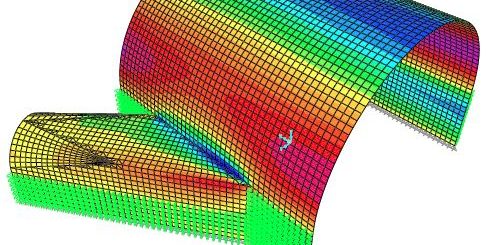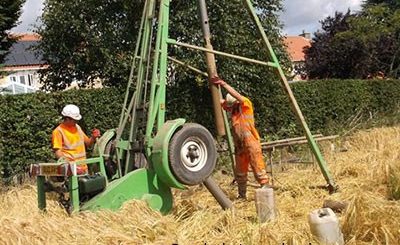Consolidation Settlement [simply explained]
Consolidation settlement is a different kind of settlement that we experience when compared to the other type of settlement of foundations.
Mainly, there are two types of settlements.
- Immediate Settlement
- Time dependant settlement which is consolidation settlement
Let’s see what is the consolidation of soil.
Consolidation
When the construction of the foundation is done(application of additional load), pore water pressure in the saturated clay increases as the hydraulic conductivity of the clay is very small. Some time is required for excess pore water pressed to dissipate and increase the stress to be transferred to the soil skeleton.
This gradual increase in the effective stress in the clay layer will cause settlement over a period of time and is referred to as consolidation settlement.
Further, consolidation of soil can be elaborated as follows.
Application of load tends to volumetric compression underlying soils. When the soil is saturated, pore water pressure increases immediately upon the application of loads. Consolidation is the process by which there is a reduction in volume due to the expulsion of water from the pores of the water.
The dissipation of excess pore water pressure is accompanied by an increase in effective stress and volumetric strain. Cohesive soils have much lower hydraulic conductivity, and, as a result, consolidation required a far longer time to complete.
There are two stages of consolidation of soils.
- Primary Consolidation Settlement
- Secondary Consolidation Settlement
More information about these two will be discussed in detail in the latter part of this article.
Some key aspects of consolidation settlement are as follows.
- Time dependence process
- It is a three-dimensional process sine movement of water could be any direction. However, the confinement of the soil in the lateral direction, consolidation could be considered as vertical and one dimensional.
- The permeability of soil impact the consolidation of soil.
Let’s discuss some terminology to understand the consolidation.
Terminology
Primary Consolidation
Consolidation of the compressible soils occurs in two stages defined previously.
Primary consolidation is a process of dissipation of increased pore water pressure due to the application of loads on the soil layer and increases in the effective stress in the soil skeleton.
This results in a volumetric change in the soil skeleton. The settlement caused due to the reduction of the volume is called the primary consolidation settlement.
Secondary Consolidation
Secondary consolidation occurs after the primary consolidation that is with the dissipation of the increased pore water pressure.
Secondary consolidation occurs with the rearrangement of the soil skeleton with the dissipation of the pore water pressure and with the reduction of the volume.
Secondary Consolidation Settlement is the settlement that occurs in this stage.
This process is also referred to as the creep process.
Overconsolidation
Over consolidation the comparison of the stress acting on the soil in the current stage to its highest stress experienced by the soil.
If the current stress is less than that applied in the past, the solid is overconsolidated.
Overconsolidation Ratio OCR
OCR is used to define the consolidation state of soil with respect to the past.
OCR = Highest stress experienced by soil / Current stress on soil
OCR can interpret the acting load as OCR times less than that already applied during consolidation.
It works like a factor of safety against further consolidation.
Normally Consolidated Soil
A soil that is currently experiencing its highest stress is said to be “Normally Consolidated Soil” and has an OCR of one.
i.e
Highest stress experience by soil = Current Stress on Soil
The higher overburden pressure expense by the soil (weight or stress applied by the other layers on top) remains the same as now.
Preconsolidation Pressure
The maximum effective vertical overburden stresses that a particular soil sample has sustained in the past.
The preconsolidation pressure is also known expressed in other terms such as pre-consolidation stress, precompression stress, pre-compaction stress, and preload stress.
Degree of Consolidation
Degree of Consolidation = Amount of consolidation at a given time with a soil mass / Total amount of Consolidation obtainable under the given stress condition.
This also can be written as follows for a clay layer.
Degree of Consolidation = Settlement of the clay layer at the time t after the load is applied / Maximum consolidation settlement that the clay layer will undergo under given loading.
Soil Types Undergo Consolidation Settlement
The following soil types are prone to consolidation settlement.
- Clay
- Organic soils
- Silty Soils
Now, let’s come to the tropic of Consolidation
Primary Consolidation
The definition of primary consolidation is discussed above under the terminology.
Let’s the method of primary Consolidation settlement calculation
There are two different stages of soil.
- Normally Consolidated Soil
- Over Consolidated Soil
It is required to assess the consolidation of soil is done based on the above states.
Calculation of Consolidation Settlement of Normally Consolidated Soil
In simple terms, the normally consolidated soil is experiencing its highest stress from the past up to now(currently).
Firstly let’s see the stress distribution under the foundation where there is a clay layer. More importantly, we consider the average stress in the clay layer in the settlement calculation.
The average increase in the pressure in the clay layer can be calculated as follows.
Δσ’av = (1/6)[Δσ’t + Δσ’m + Δσ’b ]
The settlement of the foundation can be calculated from the above equation. The worked example given at the end of this article could be referred to for further information.
Calculation of Consolidation Settlement of Overconsolidated Clay Soil
Depending on the applied load, the calculation of settlement can be done.
Case 01: Applied Stress is less than Preconsolidatioon Stress
Case 02: Applied Stress is greater than Preconsolidation Stress
Secondary Consolidation
Secondary consolidation settlement occurs after the completion of dissipation of the excess pore water pressure developed immediately after the application of load.
The settlement caused due to the plastic adjustment of the soil fabrics at the end of the primary consolidation is called secondary consolidation.
Secondary Consolidation also can be explained as slippage and reorientation of soil particles under sustained loads.
Secondary Consolidation can be calculated as follows.
The following factors are important to note in the assessment of the secondary consolidation settlement.
- Organic and highly compressible soils are more susceptible to higher secondary consolidation
- The secondary consolidation is less significant in overconsolidated inorganic clays as the secondary compression index is very small.
Types of Tests to Find Consolidation Settlement
- One dimensional consolidation test
- Oedometer Test
- Incremental Loading Oedometer
Worked Example: Primary Consolidation Settlement Calculation in Normally Consolidated Clay
The following figure indicates the work example information
Consolidation of soil (normally consolidated) can be evaluated from the following equation as discussed in this article.
Sc = CcHc/(1+e0) log[(σ’0+Δσ’av)/σ’0]
Where
Sc – consolidation settlement in the normally consolidated clay
Cc – Compression index – to be evaluated from the laboratory testing
Hc – Height of the clay layer
e0 – Initial void ratio of the clay layer – to be obtained from the laboratory testing of undisturbed sample
σ’0 – Soil stress at mid-height of the clay layer
Δσ’av – Average increase in the stress in the clay layer due to the foundation load
Calculate soil stress (σ’0 ) at mid-height of the clay layer
σ’0 = 1.5×16 + 0.5(17-9.81) + 1x(17-9.81) = 34.785 kN/m2
Calculate Increase in the Soil Stress due to Foundation load at Mid Height of the Clay Layer
Δσ’av = (1/6)[ Δσ’t + 4Δσ’m + Δσ’b ]
The calculation method of stress under the foundation is more tedious. However, there is a simplified table in the book Principals in Foundation Engineering that could be referred to as quick calculation. The method of calculating the stress under the foundation can be done using the following equation.
Consider the width and length of the foundation as (BxL = 1mx2m). The depth”z” is measured from the bottom of the foundation.
q0 = 150 kN/m2
e0 – 0.8
| Stress | m1 | z | n1 | Ic | q0Ic |
| ∆σ’t | 2 | 1 | 1 | 0.800 | 120 |
| ∆σ’m | 2 | 2 | 4 | 0.190 | 28.5 |
| ∆σ’b | 2 | 3 | 6 | 0.095 | 14.25 |
Now let’s calculate soil stress increase.
Δσ’av = (1/6)[ Δσ’t + 4Δσ’m + Δσ’b ]
Δσ’av = (1/6)[ 120 + 4×28.5 + 14.25 ] = 41.375 kN/m2
Calculate Settlement
Sc = CcHc/(1+e0) log[(σ’0+Δσ’av)/σ’0]
Sc = 0.3×2/(1+0.8) log[(34.785+41.375)/34.785] = 0.113 m = 113 mm
The primary consolidation of normally consolidated soil can be calculated as above. Similary, secondary consolidation also can be calculated using the previously discussed methods.
References
Principles of Foundation Engineering
Internet

